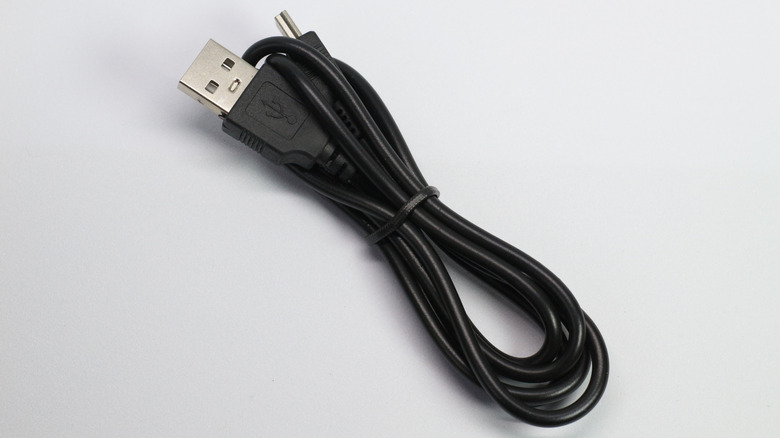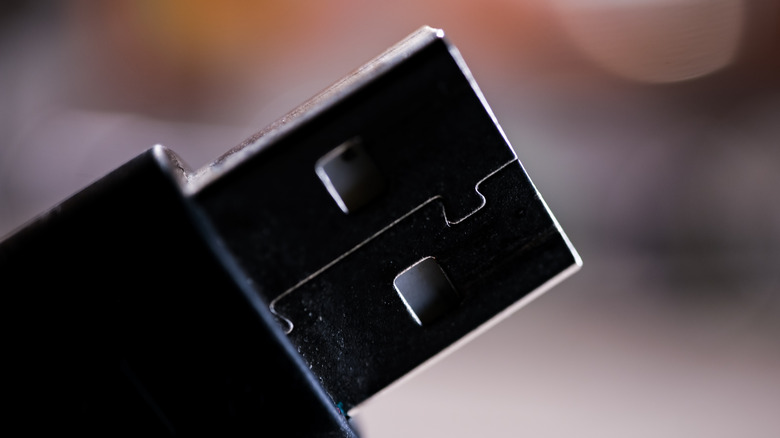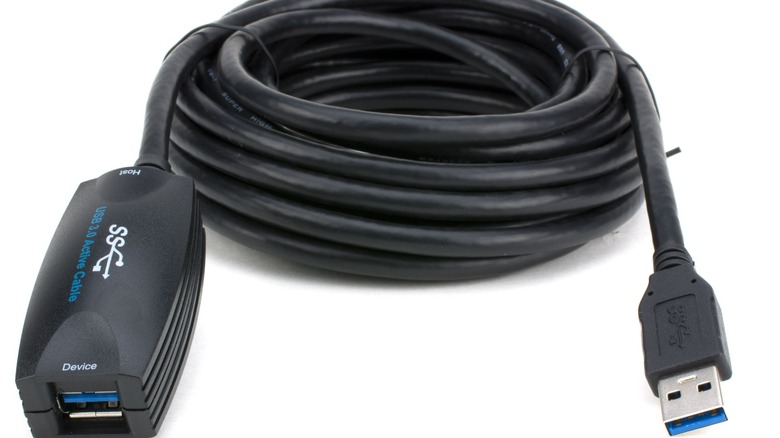How Long Can A USB Cord Be? (And Does Length Affect Performance?)
We may receive a commission on purchases made from links.
Cords are a fact of life, and most ubiquitous of all is the USB cable, which is responsible for everything from transferring information from one device to another to drawing power for devices that are otherwise wireless. Sites like Amazon are full of useful USB gadgets and replacement cords alike, making it easy as can be to get ahold of them in any form you need. That means you can get a USB cord in virtually any length needed — well, within reason, of course.
Online and in brick-and-mortar retailers, 4-foot, 6-foot, 8-foot, and more USB cables are up for sale. While the increasing reach of such cords might lead one to believe they can be any length, this isn't entirely true. USB 1.0 cables should max out at approximately 9 feet. In the case of USB 2.0 cables, it's typically recommended that they don't exceed about 16 feet, which is likely more than enough length to meet anyone's casual USB cable needs. Meanwhile, USB 3.0, 3.1, and 3.2 devices, which tend to offer significantly faster transfer speeds compared to their 2.0 counterparts, generally top out at around 10 feet. This is just one of many differences between USB 2.0 and 3.0 cables.
Though one might think that USB cable length isn't a big deal, it's actually an important consideration. Past a certain point, your cable will likely decrease in performance, regardless of how you use it.
Why USB cables lose effectiveness after a specific length
At face value, the length of a USB cable doesn't seem like something to worry about. So long as the cord is intact and both ends are properly connected, what's the worry? The fact is, regardless of your specific USB type, if it's too long, it won't be able to transfer data or power properly. Going beyond the recommended length will result in latency — otherwise known as lag — since the data has further to travel, in addition to signal loss or degradation. The longer the cable, the greater the electrical resistance, which decreases the efficiency. Longer cables are also more vulnerable to interference.
It also doesn't help if there's some kind of damage to the cable itself or if it's made of lower-quality materials prone to breakage or overheating. That's why if you're looking for a general USB or charging cord, it's important to go with one of the several trustworthy brands.
If you do need an extra-long USB cable, you're not totally limited to the recommended maximum lengths. Cord technology has evolved to accommodate extra length without compromising on performance.
How to get more length out of a USB cable without performance loss
The last thing you want from a USB cable is a loss in performance, whether it's used for transferring data or charging a device. With cables of a certain length out of the question, what can you do to get the most from these cords? Fortunately, there are some tools you can employ to extend their reach without losing quality. One route is to opt for an active extension cable, which regenerates the signal being transferred and prevents degradation over vast distances. Most tend to draw power directly from the USB device they're connected to, though it's not uncommon for longer models to require an external power source to maintain signal boosting.
Alternatively, you can use other forms of USB extenders. One option is a fiber optic USB extender, which, as the name suggests, extends the reach of USB cables and their attached devices over fiber optic cable. This involves both a transmitter and receiver that work in tandem to transfer and maintain signals across vast distances, ranging from hundreds to over 1,000 feet in some cases. If you don't need such incredible distance covered, USB to Cat5 adapters and extenders are an option, too. These utilize Ethernet cables to transfer USB cord data well over 100 feet depending on the model in question.
Even though USB cables have limits on their own, evidently, they're not hopeless after a certain point. With a little extra hardware, you can get them working efficiently well beyond their standalone length.


